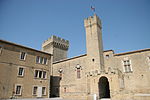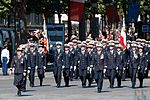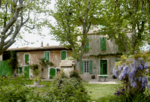Canal de Craponne

The Canal de Craponne, Craponne canal, is a canal in the Pélissanne commune of the Bouches-du-Rhône department of France. It was originally conceived and built between 1554 and 1559 by the engineer Adam de Craponne to bring fresh water 25km from the river Durance at La Roque-d'Anthéron, via Alleins and Lamanon, to Salon-de-Provence and the desertified plain of Crau. The canal was such a success that it was expanded by Craponne, and was subsequently enhanced and expanded to connect to the river Rhône at Arles and the Etang de Berre, a lagoon on the Mediterranean coast, at Istres.The canal is now renowned in French Contract Law. In 2016 an 1876 decision by the Cour de cassation was over-ruled, such that even a 300-year-old contract (circa 1559) could not be modified to accommodate a change of circumstances whereby it has become wholly unfavourable to one of the parties.
Excerpt from the Wikipedia article Canal de Craponne (License: CC BY-SA 3.0, Authors, Images).Canal de Craponne
Route Jean Moulin, Aix-en-Provence
Geographical coordinates (GPS) Address Nearby Places Show on map
Geographical coordinates (GPS)
| Latitude | Longitude |
|---|---|
| N 43.661785 ° | E 5.096298 ° |
Address
Route Jean Moulin
Route Jean Moulin
13300 Aix-en-Provence
Provence-Alpes-Côte d'Azur, France
Open on Google Maps








